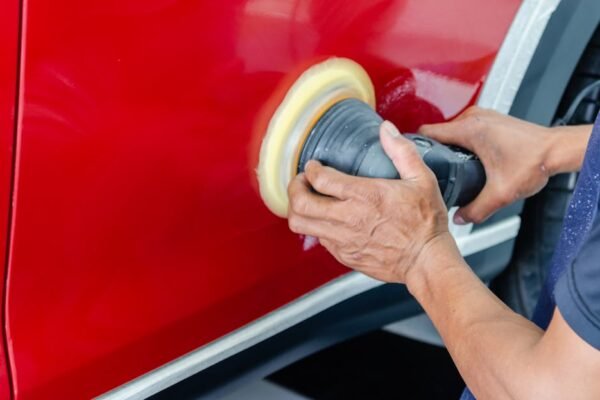Introduction to Advanced Driver-Assistance Systems
{“type”:”img1″,”src”:”https://mostmotors.com/wp-content/uploads/2024/03/fileUpload-16.jpg”,”alt”:”car technology interface”}As technology progresses, the integration of advanced driver-assistance systems (ADAS) in vehicles is becoming less of a luxury and more of a necessity. These innovative features not only enhance your driving experience but also significantly increase road safety. Upgrading your car with ADAS could seem complex, but with the right guidance, it's perfectly achievable. This post will explore how you can retrofit your car with these systems, enhancing both its value and functionality.
The concept of ADAS encompasses a variety of systems designed to assist the driver in the driving process. From automatic emergency braking to lane-keeping assistance and adaptive cruise control, these technologies help prevent accidents and make driving less taxing. However, the challenge often lies in integrating these systems into cars that weren’t originally equipped with them.
Understanding the landscape of available technologies and their compatibility with your vehicle is crucial. It's equally important to consider the legal and safety implications of such upgrades. Retrofitting your car with ADAS not only requires technical know-how but also adherence to road safety regulations.
Before diving into the complexities of installation, it’s necessary to evaluate the benefits and potential drawbacks. While the advantages in terms of safety and convenience are significant, the cost and complexity of installation can be deterrents for some car owners. Nonetheless, for those committed to enhancing their driving experience, retrofitting ADAS is a worthwhile investment.
The journey to retrofitting your car with advanced technologies begins with a thorough examination of what is available and compatible with your model. Let's delve deeper into the types of systems you can install and how to go about this process.
Choosing the Right ADAS for Your Vehicle
Choosing the right advanced driver-assistance systems for your vehicle entails a detailed assessment of available options and their relevance to your driving needs. Not all ADAS are created equal, and some may offer more value to you than others. For instance, if you frequently drive on highways, adaptive cruise control and lane keeping assist might be more beneficial than parking assistance systems.
Budget also plays a significant role in your decision-making process. Some systems, like a forward-collision warning, are more affordable and easier to install than more complex setups like a full-fledged autonomous driving aid. Therefore, it’s vital to prioritize based on your primary needs, budget, and the technical feasibility of installing specific systems in your vehicle.
It’s advisable to consult with a professional before making any decisions. Automotive technology specialists can offer insights into the most compatible and effective systems for your car. They can also highlight potential challenges and the necessary steps to overcome them during the installation process.
Remember, not all vehicles are suitable for every type of ADAS. Structural limitations and the car's existing technology can impact the installation process. Make sure to thoroughly research and possibly seek expert advice to ensure that your chosen systems can be successfully integrated into your vehicle.
With the right approach, choosing and installing ADAS in your car can be a smooth and rewarding process. Let’s take a closer look at the installation process and what you should expect.
Installation Process: What to Expect
{“type”:”img1″,”src”:”https://mostmotors.com/wp-content/uploads/2024/03/fileUpload-17.jpg”,”alt”:”professional car mechanic”}Retrofitting your car with ADAS is not a simple plug-and-play operation; it requires careful planning and execution. Firstly, understand that the complexity of the installation will vary depending on the systems you choose. Simple aftermarket backup cameras might only need basic wiring knowledge, whereas integrating something like adaptive cruise control could require extensive modifications.
Choosing the right technician or workshop is crucial. Look for professionals with experience in retrofitting ADAS to similar vehicles. Their expertise can prevent common pitfalls and ensure that the systems function seamlessly with your car’s existing setup. It's also a good time to inquire about warranties and support for the installed systems.
Preparation is key. Before the actual installation begins, ensure that your vehicle is thoroughly examined. This check can identify any compatibility issues or necessary upgrades to support the new ADAS. It’s also wise to have a clear understanding of the installation timeline and any disruptions to your vehicle’s availability.
The installation process may require recalibration of existing systems and, in some cases, software updates. These steps are essential to ensure that the new and old systems work harmoniously, providing you with the enhanced safety and convenience features you seek.
After installation, a comprehensive test drive is crucial to verify that all systems are operational and behaving as expected. It may also be necessary to adjust your driving habits to fully leverage the benefits of these advanced technologies.
Maintaining Your Upgraded Systems
After successfully retrofitting your vehicle with ADAS, maintaining these systems is essential to ensure their longevity and effectiveness. Regular check-ups and diagnostics can prevent malfunctions and ensure that the systems continue to operate at peak performance.
Software updates play a critical role in the maintenance of ADAS. Manufacturers often release updates to improve system performance and add new features. Stay informed about these updates and install them promptly to keep your systems up to date.
It's also important to be aware of any signs of system malfunction, such as false alarms or unresponsiveness. Early detection and repair of these issues can prevent more severe problems down the line and ensure that your ADAS continue to provide the intended safety benefits.
In addition to professional maintenance, familiarizing yourself with the basic functionality and troubleshooting of your systems can be invaluable. This knowledge enables you to address minor issues and make the most out of your advanced driver-assistance systems.
Embracing the future of driving by retrofitting your car with ADAS is a significant step forward in automotive safety and convenience. By carefully selecting, installing, and maintaining these systems, you can enjoy a more secure and enjoyable driving experience.
Conclusion
Retrofitting your car with advanced driver-assistance systems is an investment in safety, convenience, and the overall value of your vehicle. By following the steps outlined in this guide, from selection to maintenance, you can achieve a successful upgrade to your ride. Embrace the future of driving by enhancing your vehicle with the latest in automotive technology.
As technology continues to evolve, staying informed and open to advancements in vehicle safety is crucial. The journey to retrofitting your car with ADAS is not only a way to upgrade your vehicle but also a commitment to safer and more responsible driving. Drive into the future, equipped with the tools and technologies that make roads safer for everyone.





